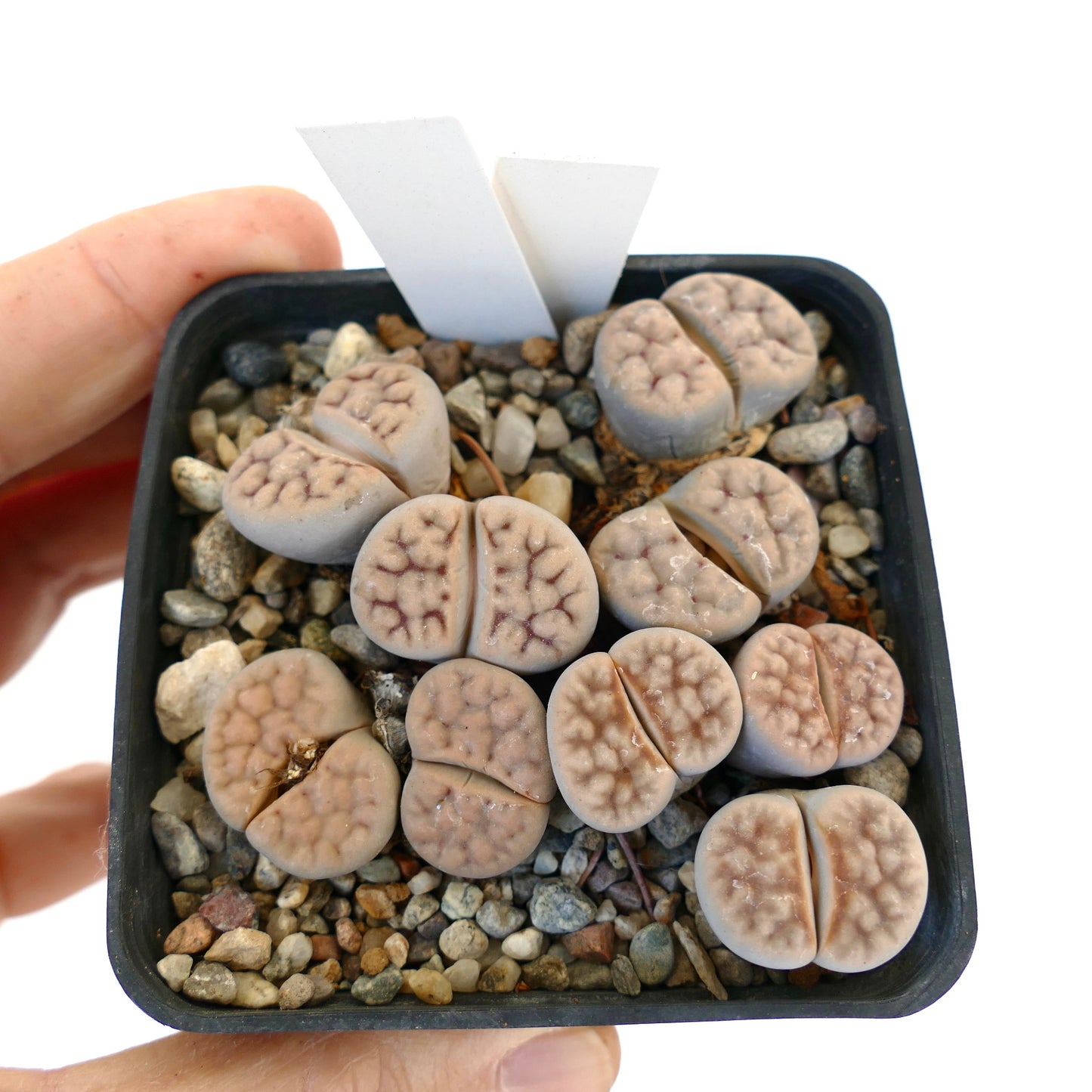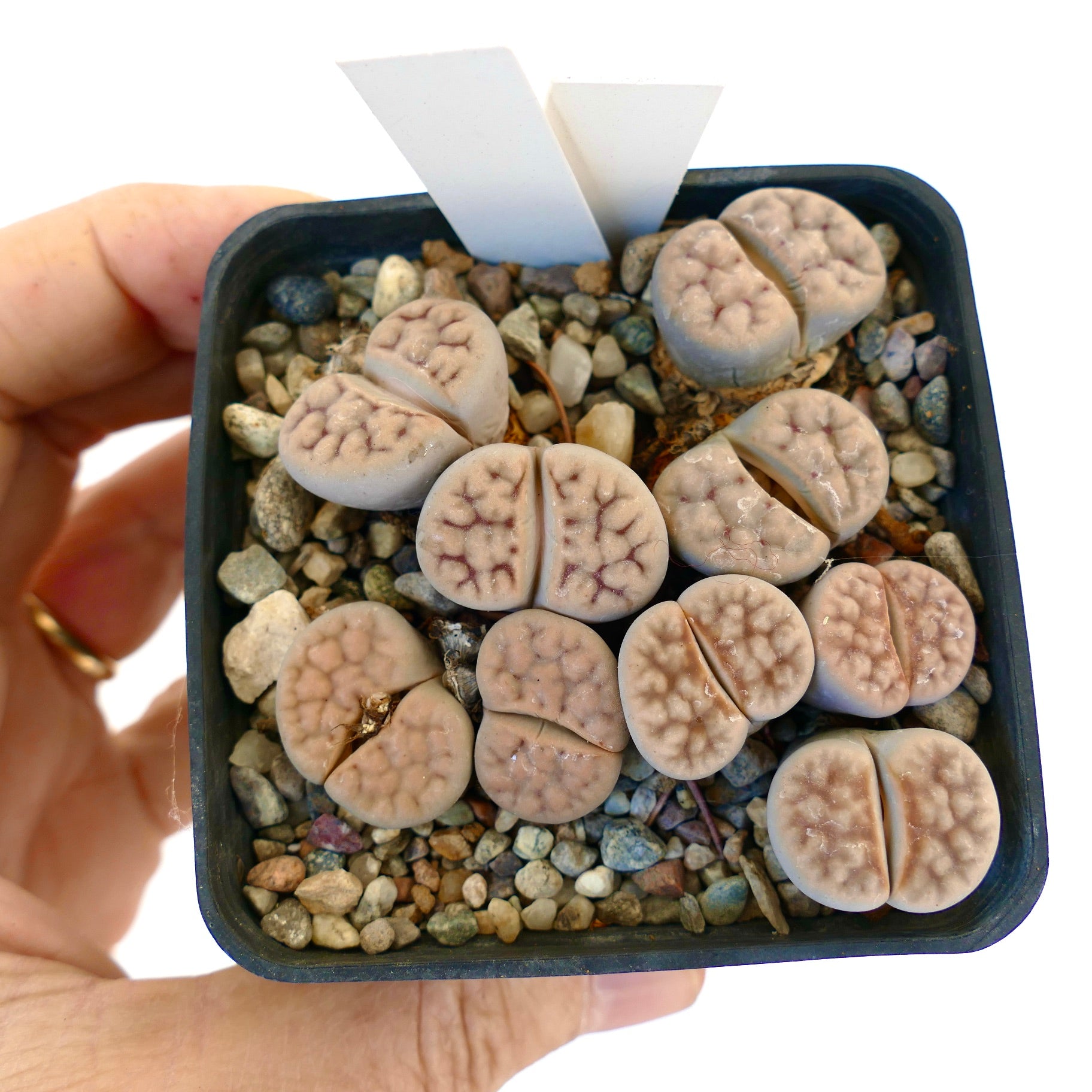- Sigle Speciem
Lithops karasmontana C328 (Signalberg Form) 25 km WNW of Grünau, Namibia
Lithops karasmontana C328 (Signalberg Form) 25 km WNW of Grünau, Namibia
Impossibile caricare la disponibilità di ritiro
Product Description
Lithops karasmontana C328, conosciuta come la forma Signalberg, proviene da un'area situata approssimativamente a 25 km a ovest-nord-ovest di Grünau, Namibia. Ecco una descrizione di questa affascinante pianta grassa:
-
Aspetto: Questa varietà presenta tipicamente una coppia di foglie spesse e fuse che formano una forma arrotondata o leggermente triangolare. Le foglie sono spesso di colore grigio-verde, talvolta con sfumature di rosa o marrone, che imitano il terreno roccioso del suo habitat naturale.
-
Texture: Le foglie di Lithops karasmontana C328 sono di solito lisce con occasionali leggere indentazioni o segni, riflettendo la sua adattamento agli ambienti aridi.
-
Fioritura: Durante la stagione della fioritura, che di solito avviene nei mesi autunnali, Lithops karasmontana C328 produce fiori solitari simili a margherite che emergono dalla fenditura tra le sue foglie. I fiori possono variare in colore dal bianco al giallo e possono avere petali delicati con una consistenza cartacea.
-
Habitat: Nel suo habitat nativo vicino a Grünau, Namibia, questa varietà di Lithops prospera in paesaggi rocciosi e aridi con terreno sabbioso o ghiaioso ben drenante. È adatta per il giardinaggio xeriscaping e richiede un'annaffiatura minima per prosperare.
-
Cura culturale: Come altre specie di Lithops, Lithops karasmontana C328 preferisce la luce solare intensa e un'annaffiatura minima, soprattutto durante il suo periodo di dormienza in estate. È importante evitare l'eccesso di annaffiature per prevenire il marciume.
-
Dimensioni: I campioni maturi di solito raggiungono un diametro di 2-4 centimetri, anche se le dimensioni possono variare da pianta a pianta.
Lithops karasmontana C328, con il suo aspetto unico e le sue adattamenti agli ambienti difficili, è un'aggiunta affascinante alle collezioni di piante grasse e ai giardini aridi.
Botanical family: Aizoaceae
Botanical genus: Lithops
Botanical species: Lithops karasmontana C328
Cultivation
Cultivation
Info and Disclaimers
Info and Disclaimers
Plant Height:
Plant Diameter:
Pot Size:
Grafted/Not Grafted:
Picture take on:






